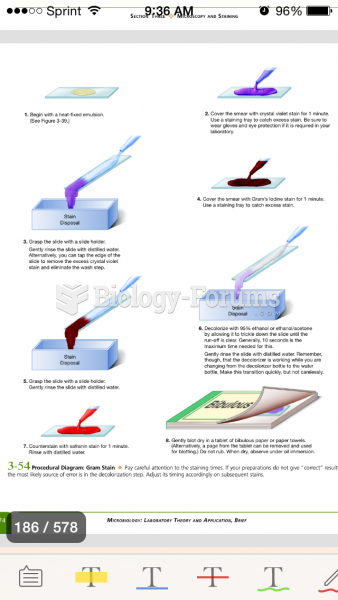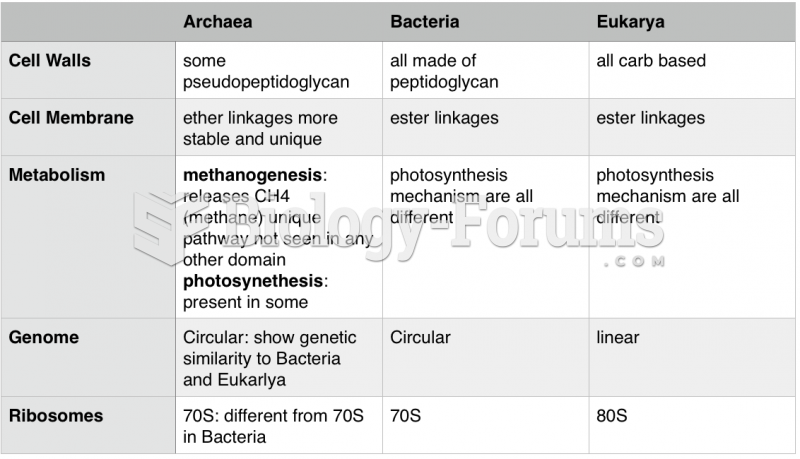Answer to Question 1
Correct Answer: 3
Rationale 1: Aerobic describes the ability of the bacteria to use oxygen.
Rationale 2: Bacillus (rod), cocci (spherical), and spirilla (spirals) describe the shape of bacteria.
Rationale 3: The stain can be gram-positive or gram-negative.
Rationale 4: Bacillus (rod), cocci (spherical), and spirilla (spirals) describe the shape of bacteria.
Global Rationale: The stain can be gram-positive or gram-negative. Aerobic describes the ability of the bacteria to use oxygen. Bacillus (rod), cocci (spherical), and spirilla (spirals) describe the shape of bacteria.
Answer to Question 2
Correct Answer: 2
Rationale 1: The culture and sensitivity will take 2 weeks for the results to be available is incorrect. This only takes a few days.
Rationale 2: Ideally, the pathogen should be identified before anti-infective therapy is begun. However, laboratory testing and identification may take several days or, in the case of viruses, several weeks. If the infection is severe, therapy is often begun with a broad-spectrum antibiotic, one that is effective against a wide variety of different microbial species. After laboratory testing is completed, the drug may be changed to a narrow-spectrum antibiotic, one that is effective against a smaller group of microbes or only the isolated species. In general, narrow-spectrum antibiotics have less effect on normal host flora, causing fewer adverse effects.
Rationale 3: Most people are allergic to narrow-spectrum antibiotics is incorrect. The broad-spectrum antibiotic is started while the culture is pending, and then the most effective antibiotic is used.
Rationale 4: The broad-spectrum antibiotic will cure the infection before the culture results are ready is incorrect. The broad-spectrum antibiotic is started while the culture is pending, and then the most effective antibiotic is used.
Global Rationale: Ideally, the pathogen should be identified before anti-infective therapy is begun. However, laboratory testing and identification may can several days or, in the case of viruses, several weeks. If the infection is severe, therapy is often begun with a broad-spectrum antibiotic, one that is effective against a wide variety of different microbial species. After laboratory testing is completed, the drug may be changed to a narrow-spectrum antibiotic, one that is effective against a smaller group of microbes or only the isolated species. In general, narrow-spectrum antibiotics have less effect on normal host flora, causing fewer adverse effects. The culture and sensitivity will take 2 weeks for the results to be available is incorrect. This only takes a few days. Most people are allergic to narrow-spectrum antibiotics is incorrect. The broad-spectrum antibiotic is started while the culture is pending, and then the most effective antibiotic is used. The broad-spectrum antibiotic will cure the infection before the culture results are ready is incorrect. The broad-spectrum antibiotic is started while the culture is pending, and then the most effective antibiotic is used.







